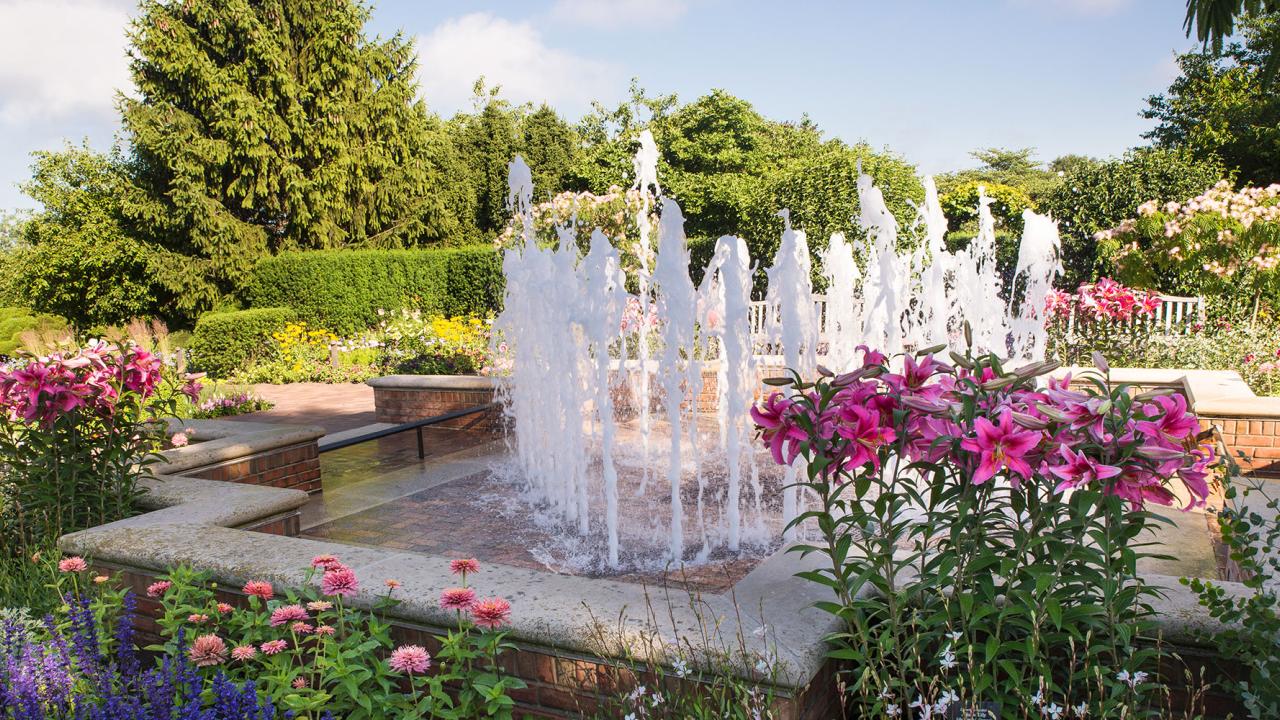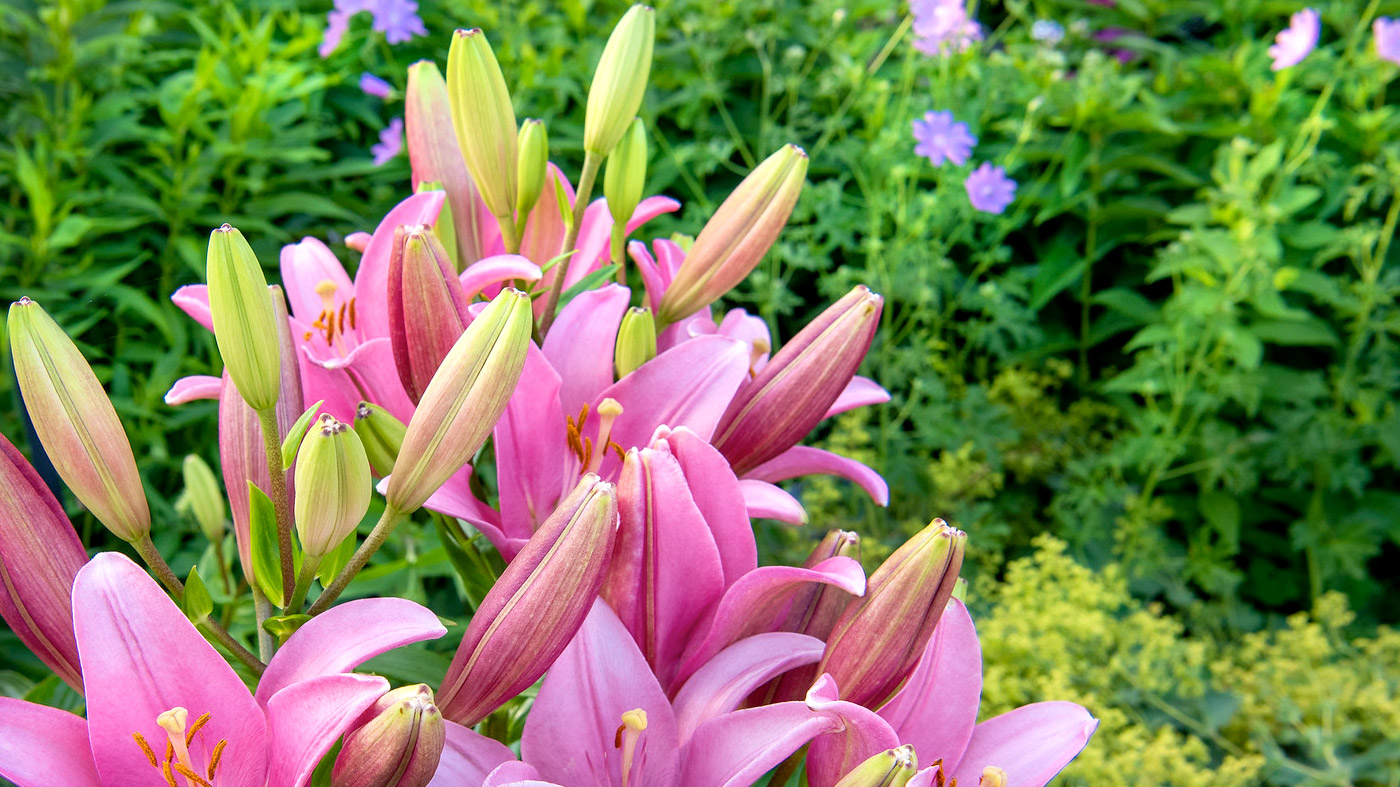

Horticulture
The Horticulture staff grows plants and maintains the display gardens and general grounds. The dazzling displays of flowers, breathtaking scenes, sculpted trees and shrubs, and bounteous fruits and vegetables have all been created with the high level of skill and expertise of the Garden's horticulture staff.

There are many layers of design, and no detail is too small for the staff. The Garden has followed strong master site plans developed since the 1960s by the former firm of Environmental Planning and Design (EPD) in Pittsburgh. This has served to organize and integrate the various landscape experiences throughout the Chicago Botanic Garden.
Environmental Planning and Design also designed many of the Garden's earliest gardens, including the Landscape Garden, Fruit & Vegetable Garden, Heritage Garden, and Waterfall Garden. Specialized designers were brought in for unique gardens, such as the late Koichi Kawana for the Japanese Garden and John Brookes for the English Walled Garden.
Although the Garden is a great teaching and scientific garden, most of its constituents enjoy it for its beauty. Because of that, the Garden has sought out the top landscape architects to design its display gardens. The firms of Dan Kiley (Administration Building and Esplanade); Oehme, van Sweden & Associates (Gardens of the Great Basin, Science Campus, and Kleinman Family Cove); and Michael Van Valkenburgh Associates (Spider Island) have all left their imprint on the Garden. Local landscape architects such as Scott Byron (Grunsfeld Children's Growing Garden) and Hoerr Schaudt (Dwarf Conifer Garden) have also designed at the Garden. Craig Bergmann and Doug Hoerr have redesigned older sections of the Garden and given input on seasonal displays in the Garden. Renowned landscape designer Mikyoung Kim provided the concept vision for the Learning Campus Garden, and the noted Belgian firm Wirtz International Landscape Architects designed a shade garden for the Kris Jarantoski Campus.
Members of the horticulture staff share their expertise through tours, lectures, and videos throughout this website and on our blog.
Plant Production
The Plant Production department receives plants into the Chicago Botanic Garden, and grows plants for the gardens and grounds, school and visitor programs, and science in the Nursery and Production Greenhouses. More than a quarter million plants move through the Plant Production facilities at the Garden each year.
Each year, 150,000 annual flowers and vegetables are produced by the Outdoor Floriculture team, 57,000 are produced by the Indoor Floriculture team, and 51,000 are produced in the nursery. The skills needed to grow the very broad range of plants seen at the Chicago Botanic Garden are incredible. Indoor crops are grown for winter festivals, the Garden View Café, displays in the Regenstein Center, and the public Garden Greenhouses. Outdoor crops include spring, summer, and fall annuals, and vegetables for the display gardens.
The nursery grows plants to finished size and holds many plants from the greenhouses until they are sent to their intended spot in the Garden. The nursery also is the overwintering home of the Garden's containerized plants. The plant propagation area produces more than 286,000 plants, which may include small plants for education classes, native plants for the Garden's native habitats, giveaway plants for the Garden's visitor programs, or plants brought from plant collecting expeditions around the world. The bonsai are also housed in the Plant Production facilities when they are not on display.
Plant Health
The Plant Health Care department monitors insect, disease, and plant pests, and protects the Garden's collections along with improving their health. This department uses sophisticated degree day schedules to predict the emergence of plant pests. It also cooperates with local governmental agencies in monitoring insects such as emerald ash borer. This department also supports the Regenstein Fruit & Vegetable Garden's organic gardening methods.
Grounds
The Grounds department maintains the general grounds, manages the Garden's landscape waste program, and helps support the gardens and Garden events. Many of the talented seasonal staff working throughout the Garden are based in this department.
Gardens
Most seasonal displays are designed by the senior horticulturists, horticulturists, and assistant horticulturists for their areas. The display garden staff maintain the Garden's 28 distinct gardens, choose seasonal displays, and work with the Plant Collections department to decide plant content. Planting, pruning, watering, and weeding — the things that daily shape the Garden and make it what it is — are accomplished by the display garden staff.

